Growing up gay in the South—the least to say, it’s sometimes difficult, and often feels impossible, and more likely than not leads to gay bashing and often times suicide. Being gay in this nation has, for the longest time, been a crime in itself. I often revisit the people who terrorized me—the boy who carved FAGGOT in all of my library books, the ferocious girl in ninth grade who told me I was queer before I had even come to terms with my sexuality, the orchestra teacher who flapped his hands in a mocking way whenever I turned my back, or talked in a high-pitched voice like my own. The boy from my early years ended up killing himself, and my orchestra teacher became homeless, then a drunkard, and eventually drove his truck into an icy lake where he drowned. I don’t know what happened to the girl, who I’d always assumed was a lesbian herself. I hope she hasn’t met a similar fate. I didn’t realize I was living in a glass closet where virtually everyone knew I was gay even as I denied it again and again.
Reading was like a shield for me. During classes, I hid in bathroom stalls and read books. I took books everywhere, to the cafeteria, to the play field, and I even had extra books piled on my desk during class. I viewed the books as a sort of shield, something that couldn’t be tarnished as easily as my spirit. I learned about myself from books, mostly crime, over the years—until I was almost thirteen years old, sodomy laws were in full force in the state, and the laws against gay bashing in South Carolina were basically nonexistent.
I taught myself how to be me through these books.I remember clutching to my copy of The Secret History in fifth grade while sitting outside the principal’s office. I had already read the book twice over, but I kept it with me as a form or protection. Most people would say something like, “I could disappear into the story” or “The world was a fantasy I could escape into.” Even as the principal sided with me, knowing as she had realized for some time how awful most students were toward me, I clutched the book. I viewed the book as not only a shield, but a weapon. I would be a best-selling author one day and I could hide where I pleased. A part of me still holds onto this idea. There were so many books, crime or with criminal elements, that depicted homosexuals in various ways. I taught myself how to be me through these books.

The Secret History by Donna Tartt
This book was nearly ten years old by the time I discovered it. This was a decade before Donna Tartt would receive the Pulitzer prize, and I felt so pleased that, in a way, she was my little secret. I found myself trapped in each of these characters, but especially the homosexual Henry. I wanted the narrator and Henry to have a romance, even though it had been ingrained me in how morally wrong this would be. United by a crime each of the character had committed, I longed to be accepted in this criminal sanctuary each of the characters shared, even if the novel’s ending left me morose and devastated after the crime was committed. The one romantic moment the narrator and Henry shared unleashed something in me, a realization there were others like me.
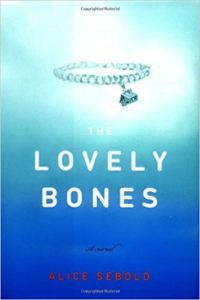
The Lovely Bones by Alice Sebold
This was a book one of my young writing instructors lent me. I was completely absorbed with it, to the point where a pastor at the Christian camp my parents sent me to was horrified (and my father, mortified) when he asked what I was reading about. “A girl who gets raped and murdered and chopped up into pieces.” The character of Ruth specifically resonated with me, the lesbian artist who seemed confident and no-nonsense.

Invisible Monsters by Chuck Palahniuk
There’s so much crime in so many of Chuck Palahniuk’s’ books. Invisible Monsters follows a trans-woman and a woman recently disfigured, for a plot that proves how deadly and sometimes hilarious crime can be. It’s been said that that every book is a mystery, and Invisible Monsters certainly fits the old adage. The novel’s trans character is not simply there for amusement, but maintains a significant role in the mystery and climax of this novel. Also, my later realization that Palahniuk is also gay didn’t hurt things at all.
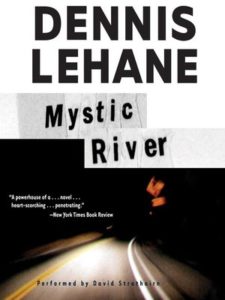
Mystic River by Dennis Lehane
This was one of the few books I’d read after seeing the movie. A young girl is murdered. Another crime, perhaps connected, reveals the dark past of one of the central characters—being raped repeatedly as a child, this man now takes out his rage on another man he views as similar to his own abuser, imprinting on me the fear of being stigmatized by Americans as a whole: gay men, queer men, are rapists. They are criminals. Their very notion made me fear my own sexuality, and quiet myself for years. I did not want to be a rapist, a child molester, an utterly evil creature like the men in this book.
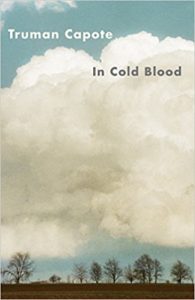
In Cold Blood by Truman Capote (also, the film Capote)
Any book Capote would write, even a true crime book like In Cold Blood, would have been innately queer. Combine the book with the film (made decades later, with Phillip Seymour Hoffman as the titular Capote) provides a somewhat affectionate, if not outright homoerotic relationship between Capote and one of the killers.

“Brokeback Mountain” by Annie Proulx / Brokeback Mountain (film)
The ultimate crime, as depicted in the film, is the murder of one of the men in a gay couple. This book is set in Wyoming, which I felt wasn’t incredibly different from the Deep South—and only increased my fear of being the victim of a gay bashing (and imagining the way anyone who murdered me would not be found victim of a hate crime) both scared me and warned me.
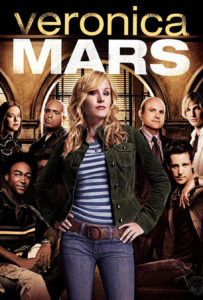
Veronica Mars, season 2 episode 14 “Versatile Toppings”
Veronica Mars, both the show and the character, is the love child of Sara Gran and Raymond Chandler. She always fights to discover the truth, including in this episode, where the crime revolves around an unknown person outing the gay kids at Veronica’s high school. The episode only gets more and more twisted from there—as the best episodes always do—and in watching this episode, I recognized my own fears come to reality—the reason I missed so much school, faked sick on so many days, was in fact because I feared the truth about my sexuality coming out.

Dare Me by Megan Abbott
This is not solely a queer novel, and it seems criminal to reveal the secrets—saved even to the last pages—of such a perfect novel, but Abbott is able to take same-sex passion to a new level, exploring it as a sort of power struggle between women, a revelation that is saved for the final pages of this magnificent, if not perfect, novel.
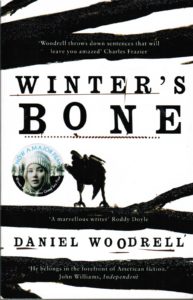
Winter’s Bone or Tomato Red by Daniel Woodrell
Woodrell’s books are hard to choose from, as they always relate to crime and often involve queer characters. In Winter’s Bone, we see a young lesbian defend her family and search for her missing (and possible dead) father. In Tomato Red, we see how cruel small towns can be through the murder of a beautiful young gay man. In many ways, I have been both empowered and fearful as a homosexual, reading Woodrell’s brilliant works. These two books are some of my favorite of Woodrell’s works, not just because of the presence of sexuality outside hetero characters, but because they are the most human.
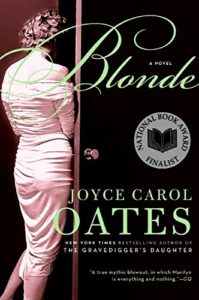
Blonde by Joyce Carol Oates
Perhaps the best (or easiest) queer book by Ms. Oates might be Zombie, or even Book of American Martyrs, but I will choose Blonde for this list. Norma Jean, who later becomes the widely known actress Marilyn Monroe, is involved—both on a sexual and a platonic relationship with two men—two beautiful, young men who may meet dreadful fates themselves. One of the characters, the son of another widely known actor, plays a pivotal role in the book’s twist, which I will refrain from exposing, but I will say that the love these two men and one woman share carries the essence of a sort of fairy tale—at least until the ultimate crime is committed against Marilyn, with Oates presenting her own theory as to how Marilyn met her demise. But, again, I tell too much.
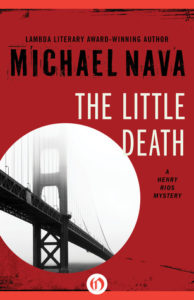
The Henry Rios novels by Michael Nava
Rios works as a private investigator and hero in a post-AIDS America. These novels, often so short but written in a brilliant style reminiscent of Raymond Chandler, exposes the sexuality and homoeroticism quite bluntly that appears as an underlying theme in so many other crime novels. Henry Rios is a character we can cheer for, and is a character I have desperately needed, as well as many other gay men like myself—someone who is not necessarily ashamed of his sexuality, and whose crimes often work around this facet of his existence.
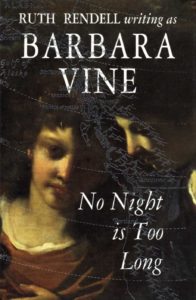
No Night is Too Long by Barbara Vine
This brilliant book is told from the viewpoint of a gay man who falls in love with a heterosexual woman and, in doing so, betrays his gay paramour. It is also a book that questions the lines between sexuality, between homosexual and heterosexual, and what love and attraction actually entails. At times, I felt myself uncomfortable reading this book, recognizing several of my own feelings toward sexuality in the book and how the book relates to reality. There is, of course, crime in addition to the betrayal in cheating on one’s lover, but providing more information on the plot would be, well, criminal.
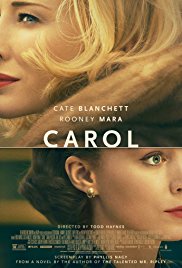
Carol (or, The Price of Salt) by Patricia Highsmith
Carol is often considered the first true gay love story with a happy ending (even grouped with novels like Maurice by E.M. Forster). The true crime here, as compared with Highsmith’s later novels that are truly murderous, is the sexuality of both of the lead characters. While it does have a (perhaps unbelievably) happy ending, the criminality lies in the sexual nature of the two characters, both women having heterosexual partners but yearning to be together with each other. This is a truly beautiful book (and a stunningly realized movie).
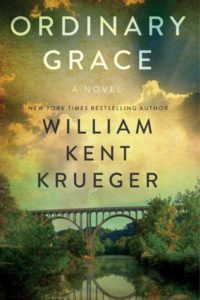
Ordinary Grace by William Kent Kreuger
The crime revolves around a missing and, later, found dead young woman, with several suspects. At one point, when her boyfriend is under suspicion, the preacher at the core of the novel—the narrator’s father—reveals to the narrator that the rape and murder of this young girl cannot possibly be the fault of the young boyfriend, for he is in fact gay. While this is a startling realization, the way the book is presented (even from a Christian viewpoint) is heartening, as the gay character is not condemned or, as many authors might have it, revealed to be the true killer. Instead, there is empathy, compassion, and—over all—acceptance.
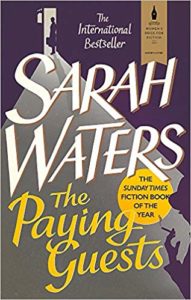
The Paying Guests, or, really, any book by Sarah Waters
The Paying Guest does, like all of Waters’ novels, revolve around the sexuality of the main characters, and the crimes resulting or causing the realization of these homosexual’s true identities. In The Paying Guests, the death of one young woman’s husband results in a bond, romantic and fierce, between two women who are in love. Of course, the women face the possibility of being recognized and punished for their sexuality (and of course murder) but the novel, like Carol, serves the women right in dignifying them with a relatively happy ending. These books have helped me feel heartened in my hopes to live and grow as a gay young man.
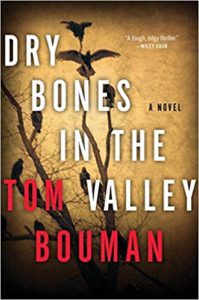
Dry Bones in the Valley by Tom Bouman
This dark book (the first in a series) is gritty and raw with a surprisingly queer climax. It would be disappointing and an injustice to describe exactly how homosexuality plays a role in this novel, but do stick around because the ending is an excellent pay-off.
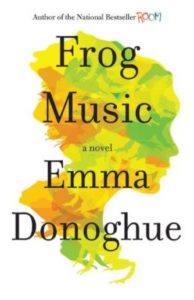
Frog Music by Emma Donoghue
In one of Emma Donoghue’s many novels, all diverse, all engaging in some sort of crime (and many with queer undercurrents, as Donoghue also falls on the queer spectrum herself), a young woman decides to find out just who killed her friend/lover in a 19th century version of a drive by shooting. The result is a thrill-ride of a book that engages in the mistreatment not just of homosexuals throughout time, but also women in general—women being a marginalized group often overlooked throughout time, and punished with a number of crimes as they are steadily marginalized and belittled by the patriarchy.

Wilde Lake by Laura Lippman
This novel, which follows the daughter of a famous lawyer as she investigates a death she will not realize is at least loosely connected to her past, flashes back and forth between the present (where the protagonist is investigating a death) to the past (told in first person, with remarkable and perhaps a more realistic relation to To Kill a Mockingbird). One of her older brother’s friends, a young gay man, dies of AIDS later in the novel, and while this character is so minor, and almost insignificant, he perhaps not only relates the feelings of many different individuals toward gay men, but also indicates that even homosexuals may be culpable in rape culture (as many gay men undoubtedly are). This is one of Lippman’s best books, and a challenge to the idea that certain people are not responsible for crimes they either witness or somehow directly or indirectly assist in.

Missing, Presumed by Susie Steiner
There are several “crimes” (some real, some imagined) in this debut of Steiner’s brilliant series, including the murder of a young man by his older gay lover, and the realization that this man is gay, despite living a fairly heterosexual and normal-seeming life with a wife and children. The book climaxes this way, with both real and imagined crimes erupting together in a brilliant, dazzling performance of writing on Steiner’s part, a warning and a lesson in the act of hiding one’s own life.

“Collectors” by Daniel Alarcòn
Originally collected in The Best American Mystery Stories, edited by Laura Lippman, I initially found this story an odd but beautiful pick for the collection (also collected in Alarcon’s own collection, The King is Always Above the People). Beautifully and tragically written, this is a story that helped me rethink stories, as well as mysteries, and how they are written. Could queer love exist, even within the walls of a prison, and the confinement to a prison cell?
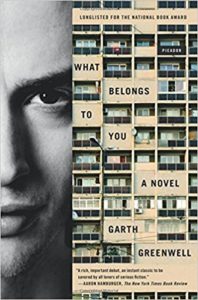
What Belongs to You by Garth Greenwell
A novel that, as Greenwell’s first, expresses a very specific and tender—and sometimes frightening—experience in love, both queer and human alike. While one would like to focus on the writing style and beauty in the words of Greenwell’s prose, it is without a doubt a novel of crime—both the sexual relationship between the two men in the book, and also in the crime that the native of the country is involved in as opposed to the protagonist, who is witnessing all of this from the wayside.
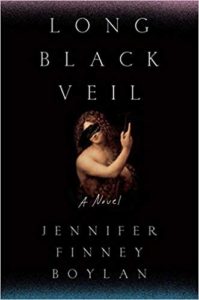
Long Black Veil by Jennifer Finney Boylan
Boylan, a trans-woman herself, is bold and eloquent here, writing about a group of friends and a murder that happens in a deserted penitentiary in Pennsylvania (I’ve actually been to the location myself!). Years later, the crime haunts these various friends, and threatens to out the transgendered character at the novel’s center, who hopes to maintain a life that may be threatened by the unearthed through the resolution of this crime. The crime and the queerness of the main character both echo well after the conclusion of the book—the struggles of being trans in a cis world.
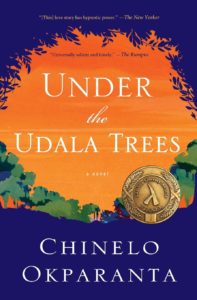
Under the Udala Trees by Chinelo Okparanta
Two young girls who have escaped Nigeria fall in love—which is a crime in itself. The novel follows and chronicles the lives of these young girls, especially the protagonist, Ijeoma, who struggles to come to terms with her sexuality in a place where it is not accepted. While there are not necessarily murders in this book, there is the question of how a young woman—a young lesbian—survives and thrives within a society that views her very being as something illegal and criminal. Undoubtedly, many of these books present authors who live dangerously by acting on their own sexual urges, as well as trying to conceal their identity in places they might be punished by abuse or death. Under the Udala Trees is certainly one of these novels.
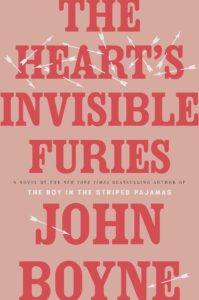
The Heart’s Invisible Furies by John Boyle
There are so many crimes committed against characters in these books—gay men are murdered on more than one occasion, in more than one generation, but ultimately this book is somehow uplifting, forgetting or forgiving the violent past that Ireland (as well as many other countries) regarding gay men, their lifestyles, their very essences. From a murder of a gay couple before the author is born, to a murder involving his life partner, the circle of violence regarding gay men is endless and completely true throughout the novel. It is something that cannot be glossed over: this violent history is true.
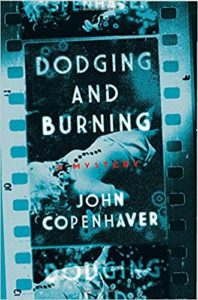
Dodging and Burning by John Copenhaver
Copenhaver’s debut, Dodging and Burning, might be the perfect way to end this list. Released just earlier this year, Copenhaver uses myriad ways and means to portray the story of two young girls circa mid-twentieth century Virginia, and the young man who reveals a picture he’s taken of a body that has just disappeared. Like some earlier books, it would be a crime against Copenhaver and his genius work to reveal exactly how queerness and murder relate to this specific book, even if many publications have published articles on how Copenhaver’s depiction of gay men in wartime is especially real and more necessary now than ever. Copenhaver’s debut does not disappoint, and concludes an extensive list that has guided me through the trials and tribulations of young adulthood in the South, if not without a few bumps along the road.

















